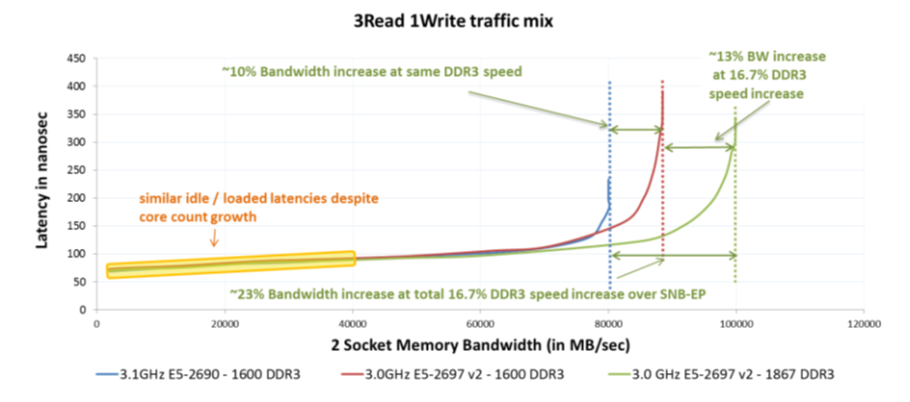Memory Latency Test 2.3.5 Crack
- ofejiwuko
- May 12, 2022
- 4 min read

Memory Latency Test 2.3.5 Crack+ Free Download Measurements are performed while this benchmarking tool is being run. The test consists of the CPU and main memory. The test is performed by writing to a specific memory address on the computer and then reading the data from that address. The number of cycles per byte depends on the cache size and the number of lines that need to be opened, and can reach quite high values. Results can vary depending on the cache size, the operating system, the number of lines opened and so on. In addition, it is also possible to take measurements while the CPU is busy doing other tasks. The benchmark tool will automatically open a number of rows and columns according to the hardware configuration. The first column is used to store the address of the desired memory address. The remaining columns contain the value of that address. As soon as the memory is filled, the CPU is stopped and the benchmark tool displays the total amount of cycles spent on the task. Summary: Memory Latency Test Cracked 2022 Latest Version is a benchmark tool designed to test out one aspect often ignored by similar tools, namely the CPU memory latency. Although a benchmarking tool, the application is lightweight and does not impact on the performance of the computer. In fact, users can perform any other tasks while the latency test is being performed. According to some users, there is a mismatch between the processor speed and the main memory that often leads to performance bottlenecks. While it is true that modern high performance processors do allocate large amounts of cache for this purpose, sometimes users may notice that multi-media processing tools or video games may suffer. The reason behind a performance bottleneck stems from the way the memory access typically works with processors. More precisely, the architecture is designed as multiple spreadsheets and the data is stored in rows and columns in each of them. Therefore, accessing a specific cell entails activating the corresponding sheet and then row and column to issue the read and write commands. Once the action is executed, a new command is sent to close the row. The simplified definition of latency is that it represents the delays between each of the aforementioned steps. Memory Latency Test Description: Measurements are performed while this benchmarking tool is being run. The test consists of the CPU and main memory. The test is performed by writing to a specific memory address on the computer and then reading the data from that address. The number of cycles per byte depends on the cache size and the number of lines that need to be opened, and can Memory Latency Test 2.3.5 Crack+ 8e68912320 Memory Latency Test 2.3.5 Crack+ (April-2022) Keymacro is an extremely lightweight application that provides a benchmark for system performance. It works by using keystrokes which can be categorized as READ and WRITE commands. The most common commands are READ M and WRITE M, although the program can also be used with any number of commands. This means that the application is very easy to use, even for absolute beginners. Keymacro also has a built-in ability to control the number of iterations. The user can set the number of iterations with an input box. The user interface is quite simple, because the program does not require a lot of options, only one main input, and two buttons: Start and Stop. The application uses these three components to run the benchmark, but it is very simple to modify them, and even turn the benchmark into a full-fledged application. In addition to a simple user interface, the application also provides a lot of options for controlling the benchmark execution. The user can start the benchmark with a delay (measured in seconds) or wait for a delay to occur. In order to do this, the user can specify what delay value to use. This value can be very small, with just a few microseconds, or very large, with a few milliseconds. The user can also specify if the application should wait for the READ or WRITE command to be performed. This setting makes the latency testing easier, because if the application does not wait for the command to be executed, the system could end up locking up if the READ or WRITE command takes a long time. In order to specify what commands should be executed, the user can enter each command as a string into an input box. As mentioned earlier, each command is a simple READ or WRITE command, but this means the user can enter any number of them and even mix READ and WRITE commands. Keymacro outputs the result of the benchmark as a text file. This file can then be imported by most text editors, which is why there is no real advantage to having Keymacro as a standalone application. The file contains the elapsed time, the number of iterations performed, and the average time spent on each iteration. A secondary output of the application is an HTML file, which contains the result of the benchmark, plus a table where all of the aforementioned information is displayed. There is also a table for keystroke information, which allows the user to view the number of keystrokes that took place. The table also contains the system information, like the processor type and speed, and the amount What's New In Memory Latency Test? System Requirements: OS: Windows XP/Vista/7/8 Processor: Intel Pentium III 2.0 GHz (800MHz) or faster, 1.5 GHz or faster recommended Memory: 512 MB RAM Hard Disk: 15 GB free hard disk space Graphics: Microsoft DirectX®9 graphics card or equivalent hardware Sound Card: DirectX Compatible sound card, 2 channel sound DirectX®: DirectX®9 or DirectX®10 Input Device: Mouse, Keyboard Additional Notes: IMPORTANT: DirectX®9
Related links:







Comentarios